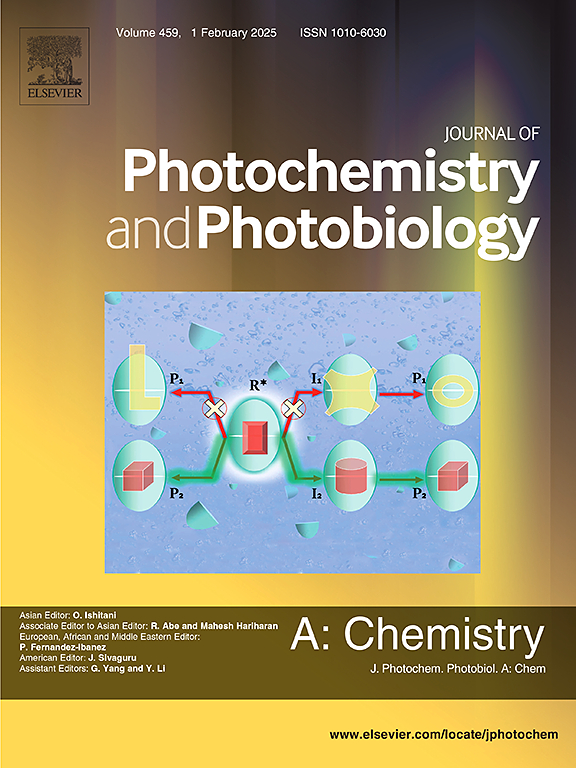GO and CNT template impact on the WO3/Bi2S3 photocatalytic activity for pharmaceutical active compounds removal
IF 4.1
3区 化学
Q2 CHEMISTRY, PHYSICAL
Journal of Photochemistry and Photobiology A-chemistry
Pub Date : 2025-03-17
DOI:10.1016/j.jphotochem.2025.116387
引用次数: 0
Abstract
A combined sol–gel and doctor blade techniques were used to obtain two types of composites. Graphene oxide (GO) and carbon nanotubes (CNTs) were used as template in the sol–gel procedure which include two steps: WO3 and Bi2S3 development. The composites crystallinity and morphology were investigated indicating the formation of monoclinic WO3 and orthorhombic Bi2S3. The GO template samples exhibit porous sponge-like morphology with 285 m2/g SBET, while the CNTs template samples have a granular morphology with 294 m2/g SBET. The elemental analysis indicate that the composite components are evenly distributed through the sample. Both GO and CNTs based samples have a predominant polar component of the surface energy which make them suitable candidate for applications in aqueous environments. The photocatalytic removal efficiency was tested in the presence penicillin G and amoxicillin (150 ppm) under UV and Vis irradiation. The highest efficiencies correspond to GO/WO3/Bi2S3 which was able to remove 57.43 % PEN-G and 63.94 % AMO. The photocatalytic mechanism was investigated and described in details.

求助全文
约1分钟内获得全文
求助全文
来源期刊
CiteScore
7.90
自引率
7.00%
发文量
580
审稿时长
48 days
期刊介绍:
JPPA publishes the results of fundamental studies on all aspects of chemical phenomena induced by interactions between light and molecules/matter of all kinds.
All systems capable of being described at the molecular or integrated multimolecular level are appropriate for the journal. This includes all molecular chemical species as well as biomolecular, supramolecular, polymer and other macromolecular systems, as well as solid state photochemistry. In addition, the journal publishes studies of semiconductor and other photoactive organic and inorganic materials, photocatalysis (organic, inorganic, supramolecular and superconductor).
The scope includes condensed and gas phase photochemistry, as well as synchrotron radiation chemistry. A broad range of processes and techniques in photochemistry are covered such as light induced energy, electron and proton transfer; nonlinear photochemical behavior; mechanistic investigation of photochemical reactions and identification of the products of photochemical reactions; quantum yield determinations and measurements of rate constants for primary and secondary photochemical processes; steady-state and time-resolved emission, ultrafast spectroscopic methods, single molecule spectroscopy, time resolved X-ray diffraction, luminescence microscopy, and scattering spectroscopy applied to photochemistry. Papers in emerging and applied areas such as luminescent sensors, electroluminescence, solar energy conversion, atmospheric photochemistry, environmental remediation, and related photocatalytic chemistry are also welcome.

 求助内容:
求助内容: 应助结果提醒方式:
应助结果提醒方式:


